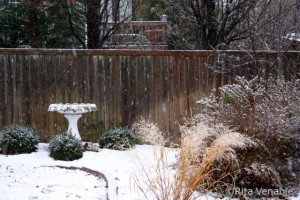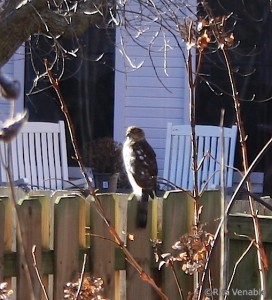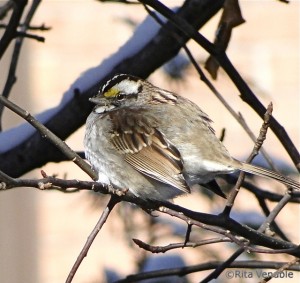This is the first blog of a series comparing Leopold’s abandoned Wisconsin farm to our lived-in Tennessee yard.
***
January observation can be almost as simple and peaceful as snow, and almost as continuous as cold. There is time not only to see who has done what, but to speculate why.
–Aldo Leopold, A Sand County Almanac

Where would a comparison begin of Leopold’s worn-out farmland in Sauk County (one of the sandy soil counties), Wisconsin and our small plot in Williamson County (one of the rich soil counties), Tennessee? Leopold’s land along the Wisconsin River was a family project of restoration where he, his wife Estella, and their five children spent weekends planting trees and experimenting with healing the land. At night, they slept in a restored chicken coop dubbed “the shack.” My husband Phil and I live miles from our Cumberland River water supply and we moved here so our two children could attend the public schools. We not only see this yard on weekends, but every day during the week as well. Our children are grown and gone and we sleep in a brick house with central heat and air. Our vision for our land is far less lofty than Leopold’s was. We just want our land to be attractive, peaceful, and private. Most of the plants are here to provide shade for us or food for butterflies. We give little thought to restoring the grounds to some previous state because we don’t know what that would look like. The plan would have to pass the homeowner’s association anyway.
Leopold’s land was farmed and overused in the 1930s during the Great Depression and the Dust Bowl. Our land was phosphate-mined and later developed into a subdivision near a regional shopping mall. The Leopold’s planted over 40,000 trees on their property; we have planted less than ten. Leopold’s shack was surrounded by land; we are surrounded by other houses, fences, and asphalt. Although the wildflowers are totally gone from our lot, some interesting wildlife is still here including some of the same species that Leopold saw on his land. According to Leopold, all members of the wildlife community are seeking freedom from want and fear.
Leopold begins A Sand County Almanac by describing the January thaw in central Wisconsin. In Middle Tennessee, the ground freezes and thaws repeatedly and snow rarely lasts for more than a day. According to our closest weather station, we have had 3 of our typical 4.48 inches of rain, sleet, and snow so far this month and the month is just over half over. Typically, the wettest months in Tennessee are, in order, May, March, December, November, and January.
Walking past the brown hydrangeas, I approach the birdbath to swish out the leaf-stained water. A mourning dove flies off in alarm with its squeaky-wheel sound. An eastern gray squirrel scours the ground under the bird feeder to feast on fallen seeds. I think its nest is in our neighbor’s yard.
January brings many birds to the feeders—the winter-resident dark-eyed juncos and white-throated sparrows, and the year-round resident blue jays, cardinals, Carolina chickadees, towhees, and finches. Migrations have ceased and surviving winter has begun. Hopefully, the red cedar trees situated to protect our house from the north winds will provide shelter for the songbirds.
No more deer graze in our yard since we erected a fence last fall. Our prolific rabbits have disappeared, but will no doubt return in spring.
Our neighborhood Cooper’s hawk is sitting on the privacy fence between our neighbors to the west and our house. It is a juvenile and showed up at 2:30 p.m. to boldly position itself toward the afternoon sun. Soft, cold breezes lifted a few of the white belly feathers and whiffed them up to reveal more of the bird’s feet. There are two bird feeders nearby, but the hawk was not watching either one. With lots of songbirds to feed upon and no natural predators here, this bird probably dwells in the blessed freedom from want and fear.

Leopold tracked a skunk on his land and wondered what aroused it from its winter slumber.
The hibernating skunk, curled up in his deep den, uncurls himself and ventures forth to prowl the wet world…I wonder what he has on his mind; what got him out of bed?
Our neighbor texts me to tell me that the skunk smell at her house is making her nauseous. The smell is inside the house probably from a skunk that lives underneath the house. Fortunately, it was warm enough that day to open all of the doors and windows to air things out. I wonder why he chose their house to live under?
Despite my love of wildlife, I do hope this skunk doesn’t wander over to our yard “dragging his ample beltline through the slush” as Leopold imagined. Our Labrador retriever puppy is far too curious to let such a visitor pass unheeded.
